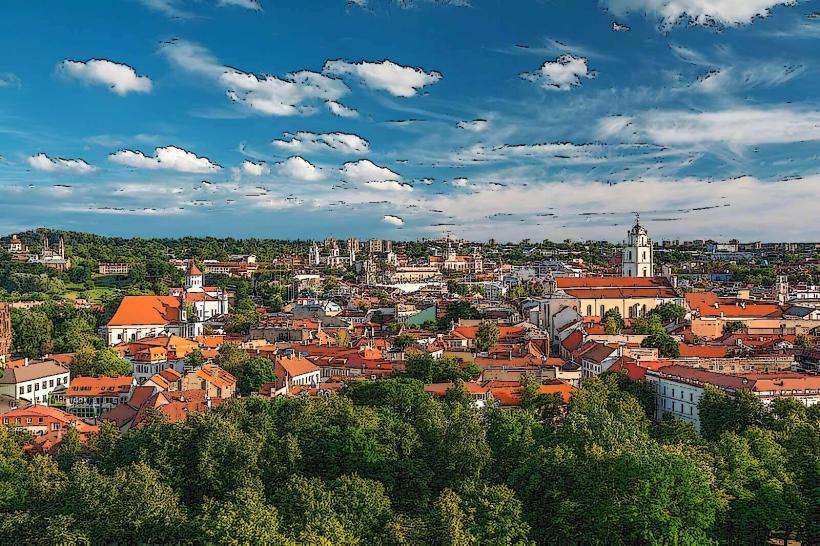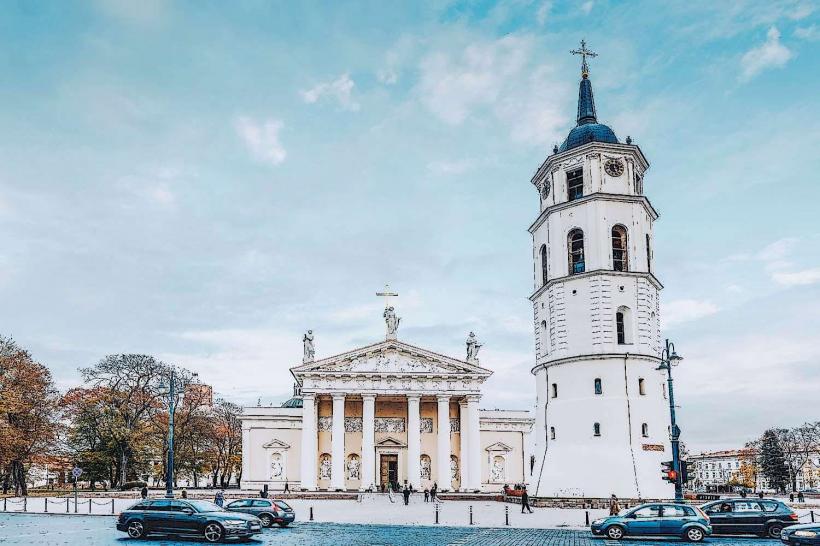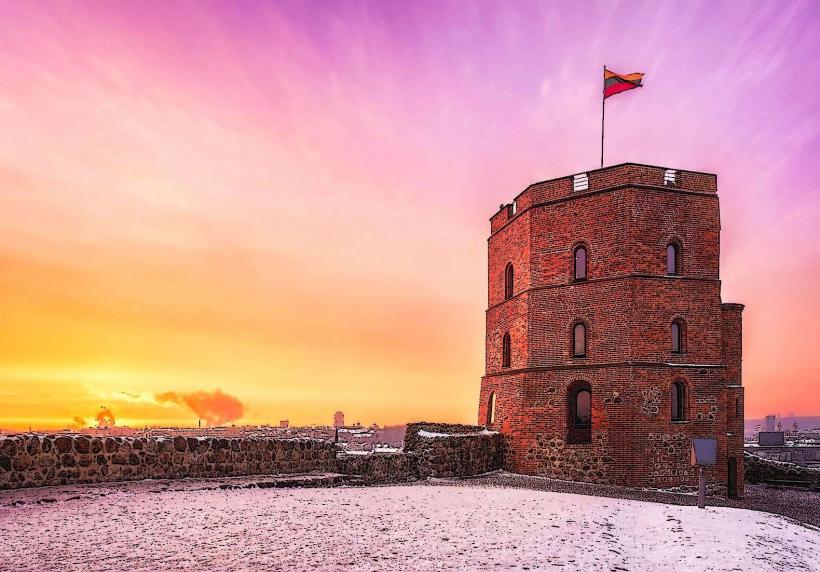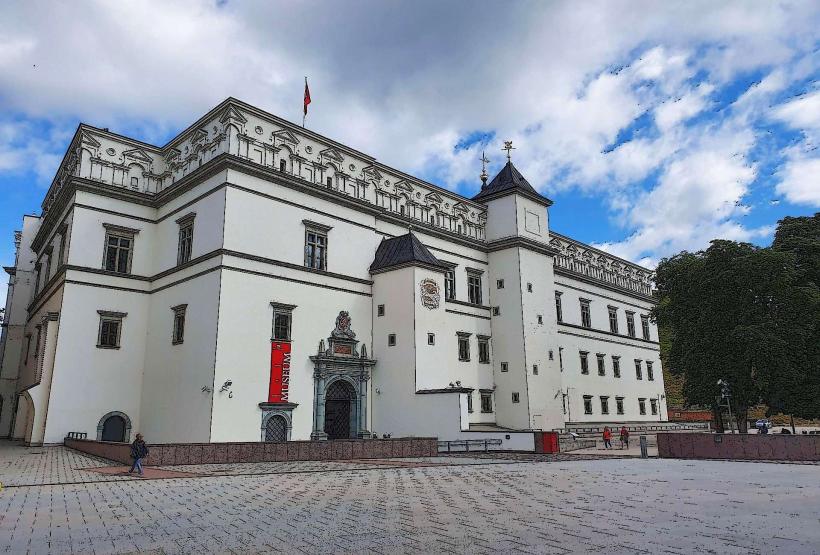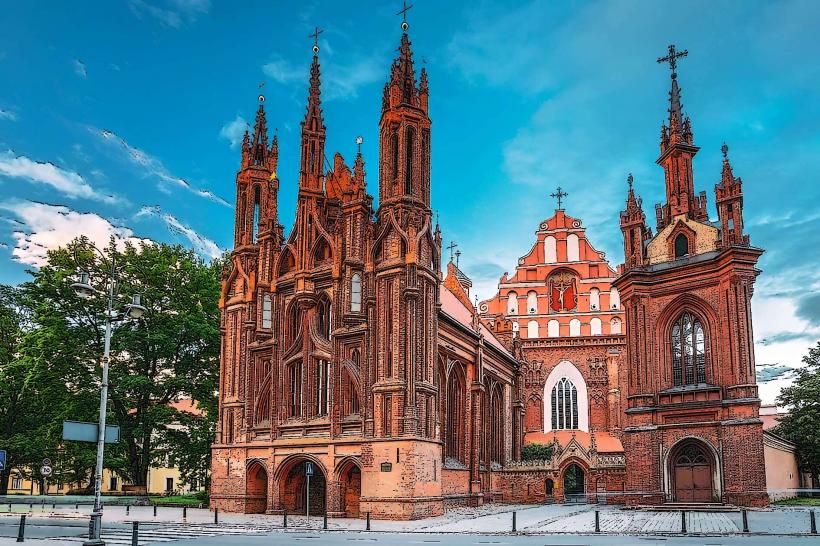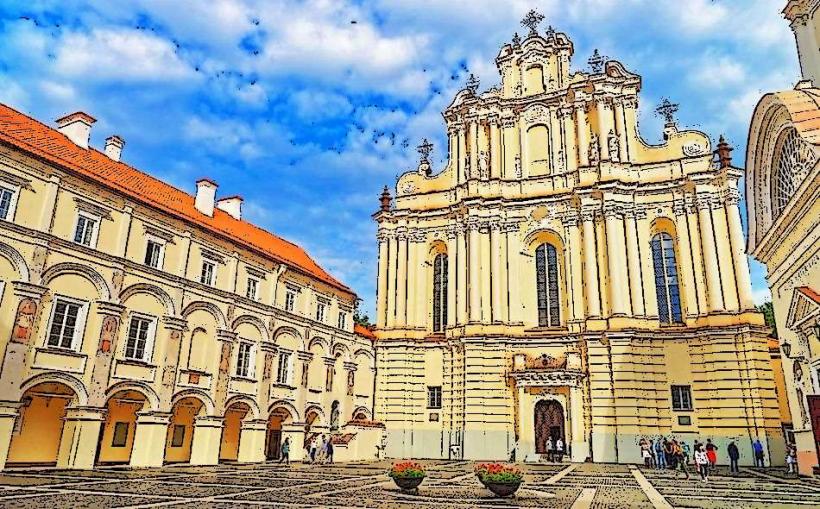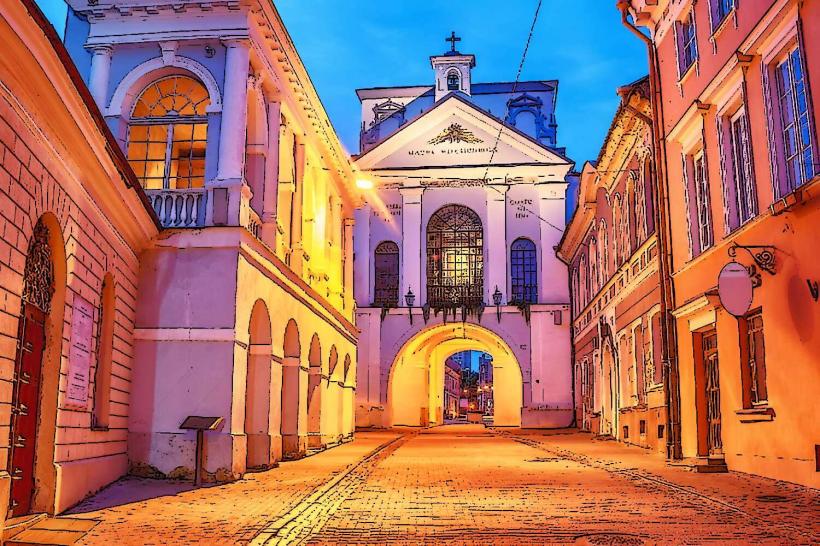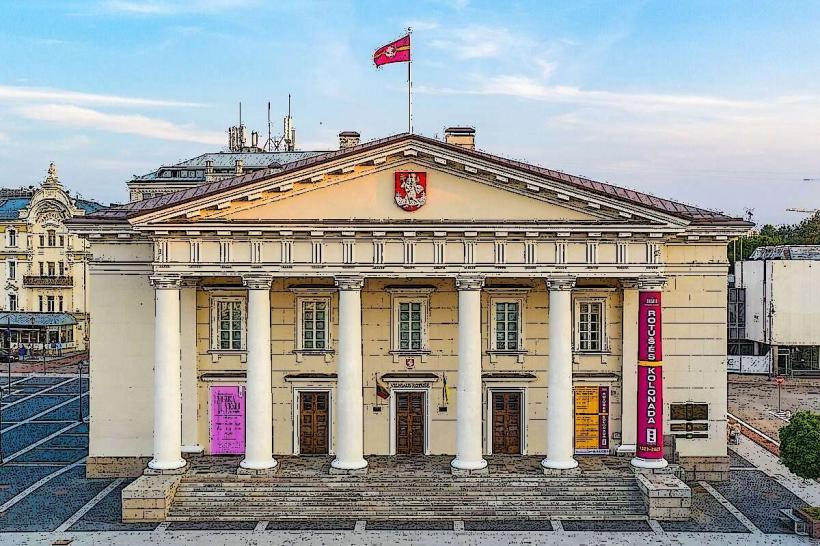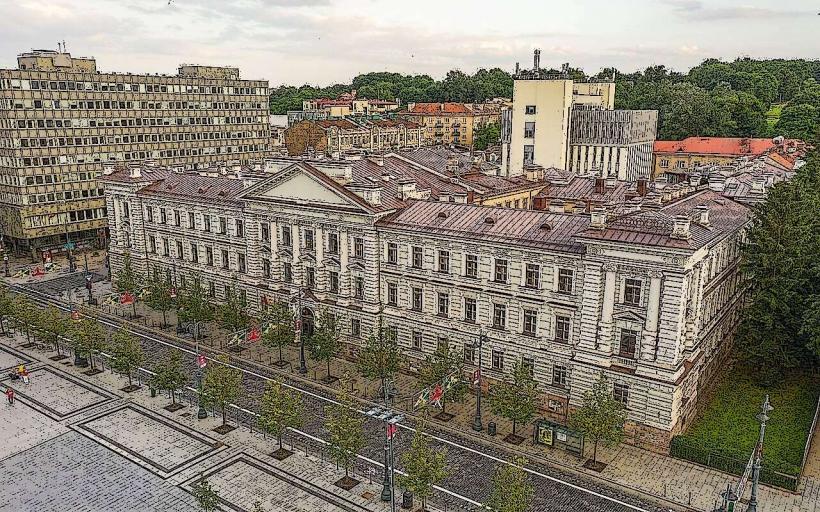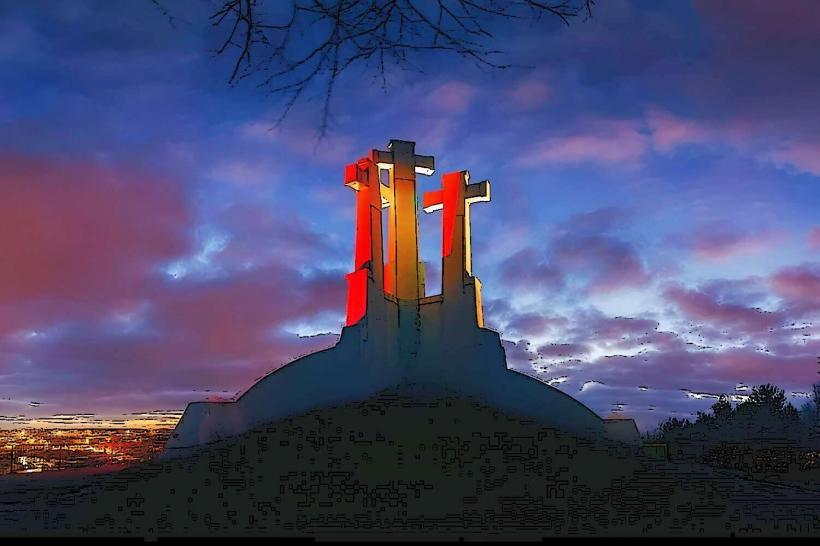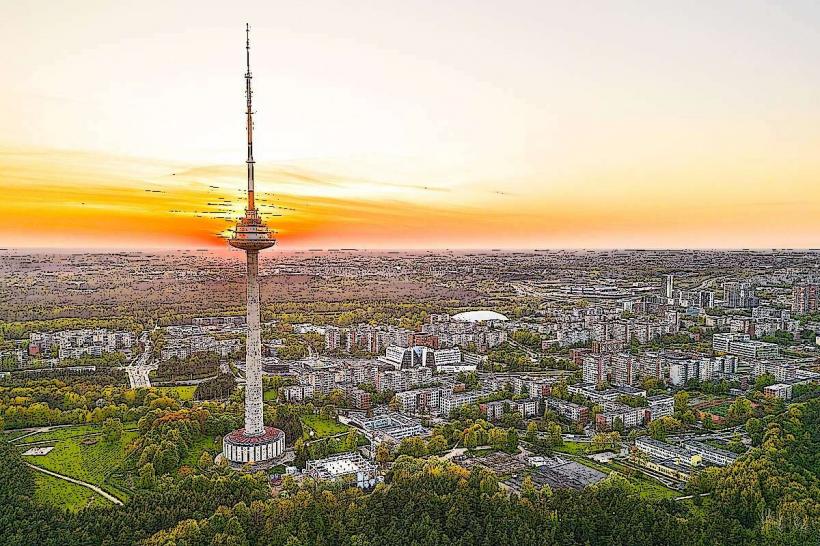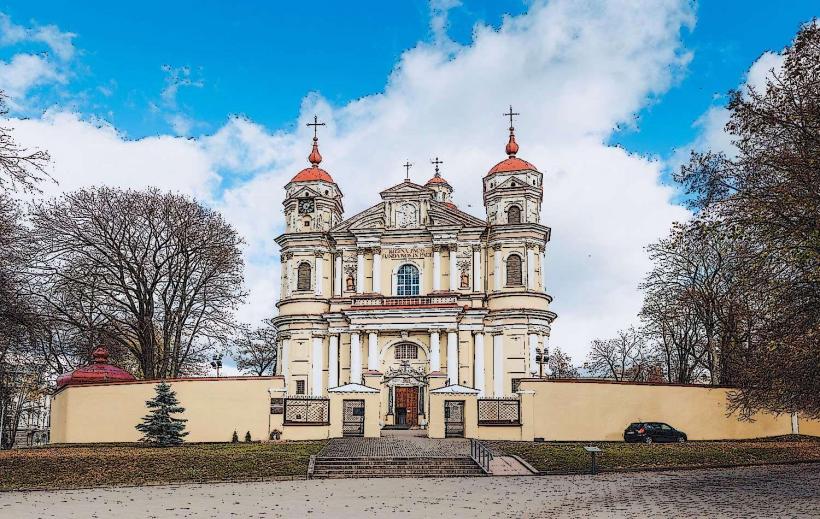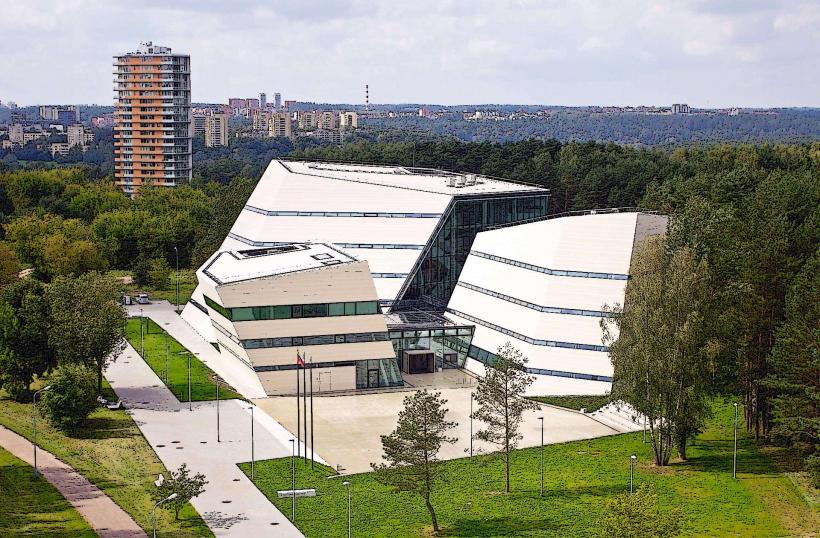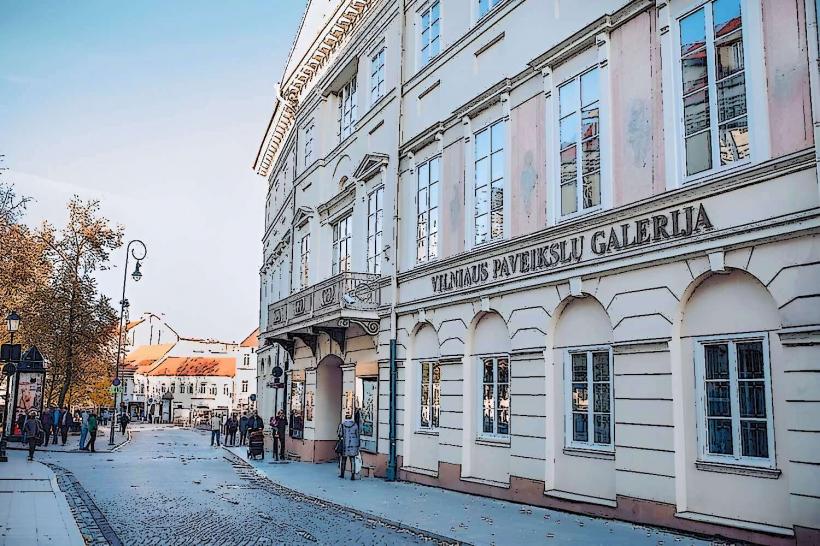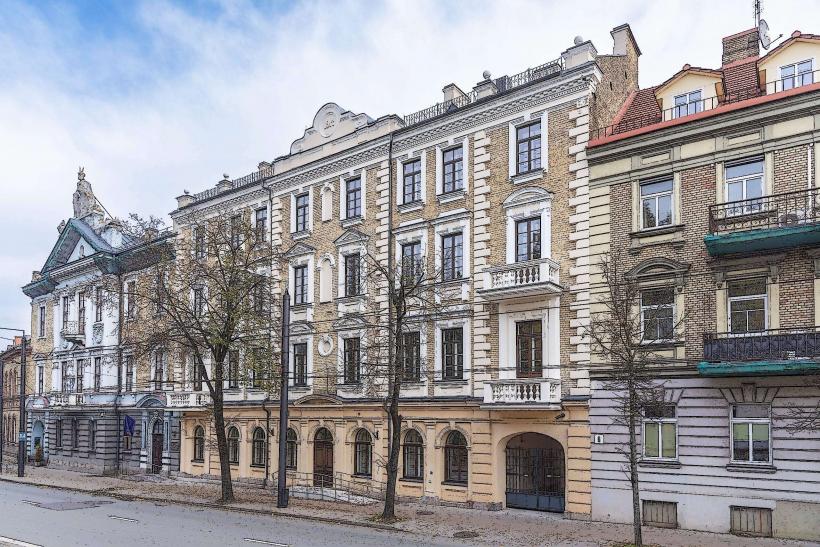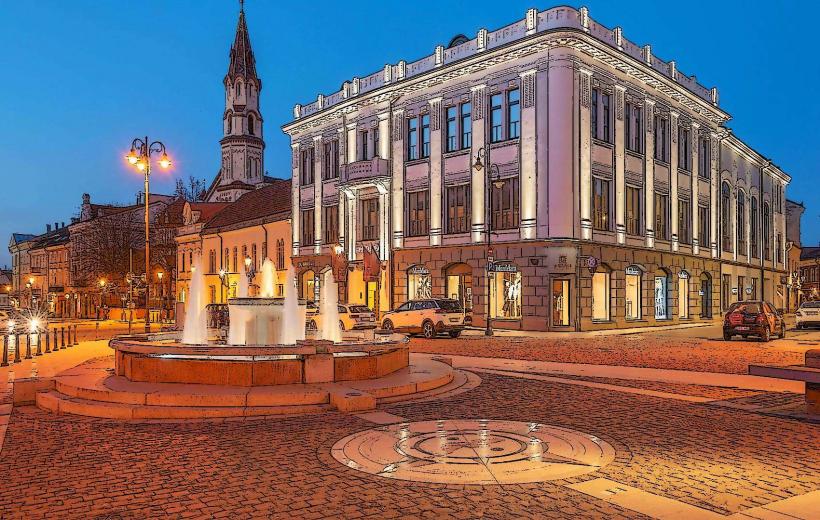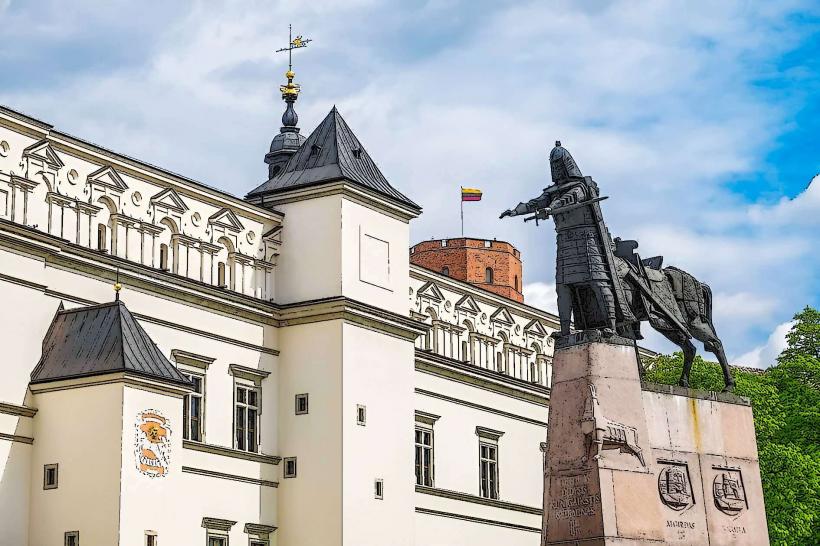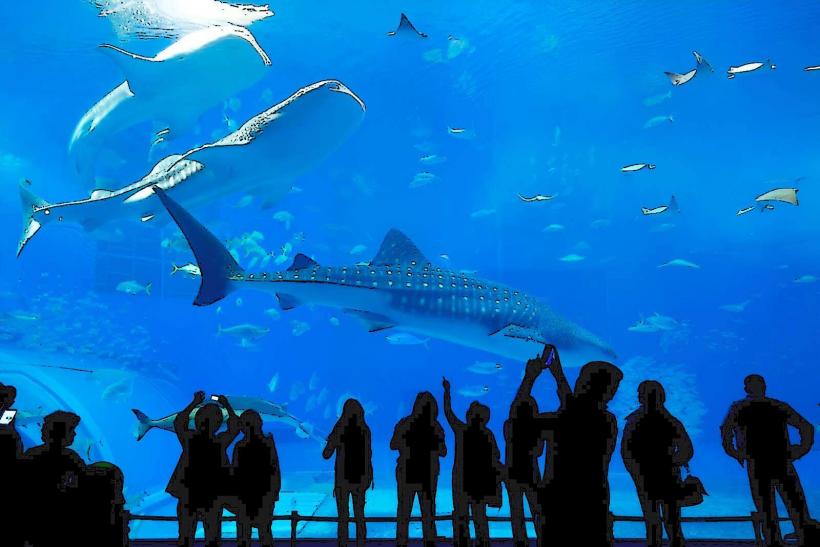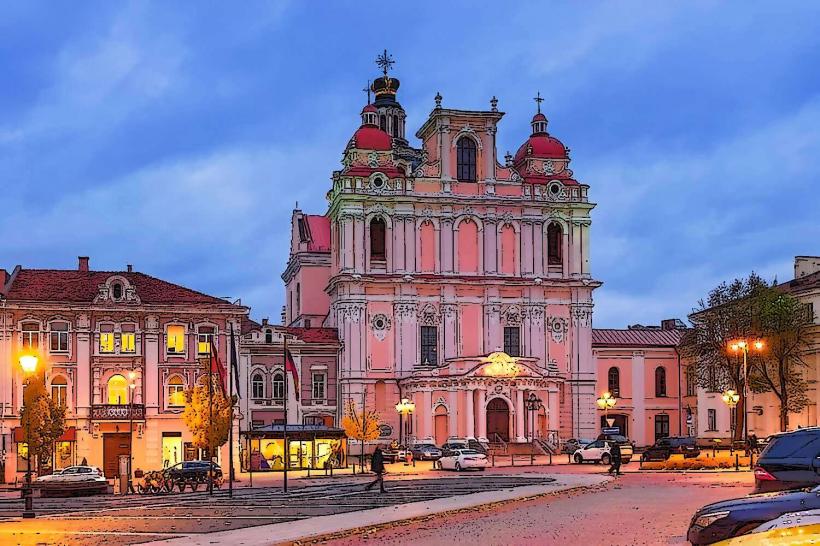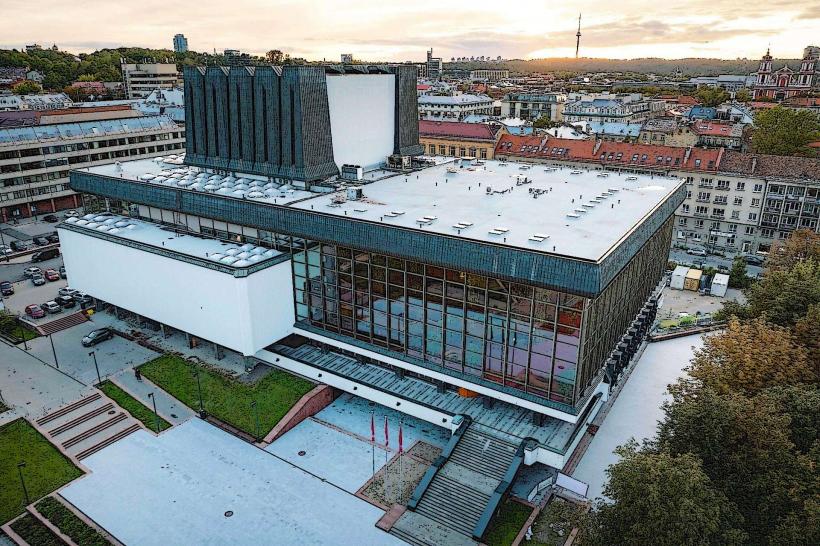Information
Landmark: Green BridgeCity: Vilnius
Country: Lithuania
Continent: Europe
Green Bridge (Žaliasis tiltas) – Vilnius
The Green Bridge (Lithuanian: Žaliasis tiltas) is a notable landmark in Vilnius, Lithuania, known for both its historical significance and its unique architecture. Spanning the Neris River, the Green Bridge is an important transportation route and one of the city's recognizable structures. The bridge also holds cultural and symbolic importance, having evolved over the centuries in response to changes in the city's infrastructure and political landscape.
History and Construction
Early History: The first bridge on this site was constructed in 1636, when the original wooden bridge was built. This bridge allowed better access between the Old Town and the other parts of Vilnius. However, over time, it was damaged and needed to be rebuilt.
Modern Construction: The current Green Bridge was constructed in the 1950s during the Soviet era. It replaced earlier versions of the bridge and was designed with a more durable structure made from concrete and steel.
- The construction was part of the larger efforts to modernize Vilnius under Soviet rule, and the bridge was designed to accommodate growing traffic demands.
Symbolic Significance: The name "Green Bridge" is derived from the green color of the bridge's decoration. The bridge's overall aesthetic design has also given it a symbolic association with the Soviet period in Lithuania, though its place in the city’s urban fabric has made it an important landmark.
Design and Features
Architectural Style: The Green Bridge was built in the Stalinist Empire style, which reflects the Soviet architectural ideals of the time. It is a steel-reinforced concrete bridge, designed to be both sturdy and functional while serving as a visual focal point in the city.
Sculptures and Decorations: The bridge is well known for its sculptural elements, which were added during its construction. These sculptures were designed to symbolize the ideals of Soviet industrialization and militarism. There are four monumental statues on the bridge, each representing different aspects of Soviet society, such as labor, agriculture, military, and science. These figures are sculpted in a realist style, and their presence on the bridge gives it a distinctive character.
Design Features: The bridge is also known for its greenish tint, which was achieved through the use of special paint. The color is one of the main reasons for the bridge's name, and it provides a striking contrast against the surrounding cityscape and the flow of the Neris River below.
Cultural and Historical Significance
Political Symbolism: The Green Bridge is an important historical symbol, particularly related to Soviet Lithuania. During the Soviet era, the bridge’s statues and overall design reflected the regime’s dominance and ideology. As a result, the Green Bridge has become a subject of debate and discussion in post-independence Lithuania, with many viewing it as a reminder of the country’s occupation and the complex relationship between Lithuania and the Soviet Union.
Modern Times: After Lithuania regained its independence in 1990, the Green Bridge remained a prominent part of the city. In recent years, there have been debates about whether to remove or preserve the Soviet-era sculptures. The statues remain in place, serving as historical markers while also being part of the city’s urban landscape.
Connection to the City: The Green Bridge is not only an important transportation route but also a visual symbol of Vilnius’ ongoing relationship with its past. The bridge provides access from the city center to the left bank of the Neris River and has become an integral part of the city’s landscape, linking the Old Town with newer districts.
Controversies and Modern Changes
Soviet-era Monuments: In the years following Lithuania's independence, there was public debate about the removal of Soviet-era monuments, including those on the Green Bridge. While the monuments have not been removed, they remain a point of contention, with some seeing them as important historical relics and others viewing them as symbols of oppression. The green bridge statues still provoke strong opinions about Lithuania’s Soviet past.
Pedestrian and Bicycle Access: The Green Bridge is not just for cars. In modern Vilnius, the bridge serves as a pedestrian and bicycle crossing, offering pedestrians and cyclists an easy way to traverse the Neris River. The pedestrian walkways offer views of the river and the surrounding urban landscape, making it an enjoyable route for those who prefer to walk or cycle.
Conclusion
The Green Bridge of Vilnius is a significant and historic landmark, with architectural, cultural, and symbolic importance. Serving as a link between two sides of the city, it is a key transportation route as well as a place for visitors to reflect on Lithuania’s complex history. Its Soviet-era sculptures and unique design make it a compelling part of Vilnius' cityscape, and it remains a powerful reminder of the country's evolving political and cultural identity.

